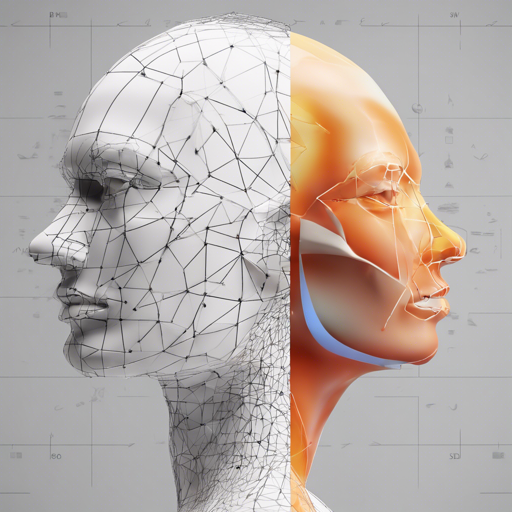If you’re diving into the world of 3D facial models, you’ve likely heard of both the Basel Face Model (BFM) and FLAME (which stands for Facial Linear Model). In this article, we’re going to take you through the process of transforming BFM data into FLAME format—a crucial step for those working with 3D graphics, modeling, or facial animation. This guide will be user-friendly, thorough, and peppered with troubleshooting tips!
Overview of the Process
Before we start, let’s understand the significance of our end goal. FLAME is a lightweight and expressive generic head model. It has been trained on over 33,000 accurately aligned 3D scans, making it a favored tool among developers. To assist you on this journey, we’ll outline the following steps:
- Setup the environment
- Create the texture model
- Convert the meshes
Setup Instructions
Here are the steps to set up your environment for converting BFM to FLAME:
sudo apt-get install python3-pip python3-venv
git clone https://github.com/TimoBolkart/BFM_to_FLAME.git
mkdir your_home_dir/.virtualenvs
python3 -m venv your_home_dir/.virtualenvs/BFM_to_FLAME
source your_home_dir/.virtualenvs/BFM_to_FLAME/bin/activate
pip install -U pip
pip install numpy==1.19.4
pip install h5py==3.1.0
pip install chumpy==0.70
pip install opencv-python==4.4.0.46In this setup phase, we create a virtual environment to keep your project organized and dependencies managed. It’s akin to building a secure vault for your important tools—without it, you might lose track of dependencies or inadvertently mix them up with other projects.
Creating the Texture Model
To create a texture model, follow these steps:
- Download the BFM 2017 model (i.e., model2017-1_bfm_nomouth.h5) from here and place it in the model folder.
- Download inpainting masks from here and place it in the data folder.
- Run the command:
python col_to_tex.py. This will output aFLAME_albedo_from_BFM.npzfile in the output folder.
This newly created texture model acts like setting the right color palette for an artist’s canvas, laying out the foundational aesthetic upon which details can be added later.
Converting Meshes
Now that you have your texture model, it’s time for the exciting part—mesh conversion. Follow these steps:
- Install the mesh processing libraries from MPI-ISmesh within the virtual environment.
- Download FLAME from here and place it in the model folder.
- Run the command:
python mesh_convert.py. This outputs the FLAME mesh for a specified BFM mesh.
This step is akin to sculpting a marble block; you are now giving a final shape to your 3D masterpiece.
Troubleshooting
While the process detailed above is straightforward, you might encounter a few bumps in the journey. Here are some troubleshooting ideas:
- If you experience import errors, double-check that all libraries are installed and that you are operating within the activated virtual environment.
- For compatibility issues with input files, ensure that you are using the correct versions of BFM (2017, 2009, etc.) as outlined in the documentation.
- If the outputs do not appear as expected, review the console messages for any warnings or errors that can guide you to the potential issues.
For more insights, updates, or to collaborate on AI development projects, stay connected with fxis.ai.
Conclusion
And there you have it—a comprehensive guide on converting from BFM to FLAME. At fxis.ai, we believe that such advancements are crucial for the future of AI, as they enable more comprehensive and effective solutions. Our team is continually exploring new methodologies to push the envelope in artificial intelligence, ensuring that our clients benefit from the latest technological innovations.
Happy coding and mesh crafting!

